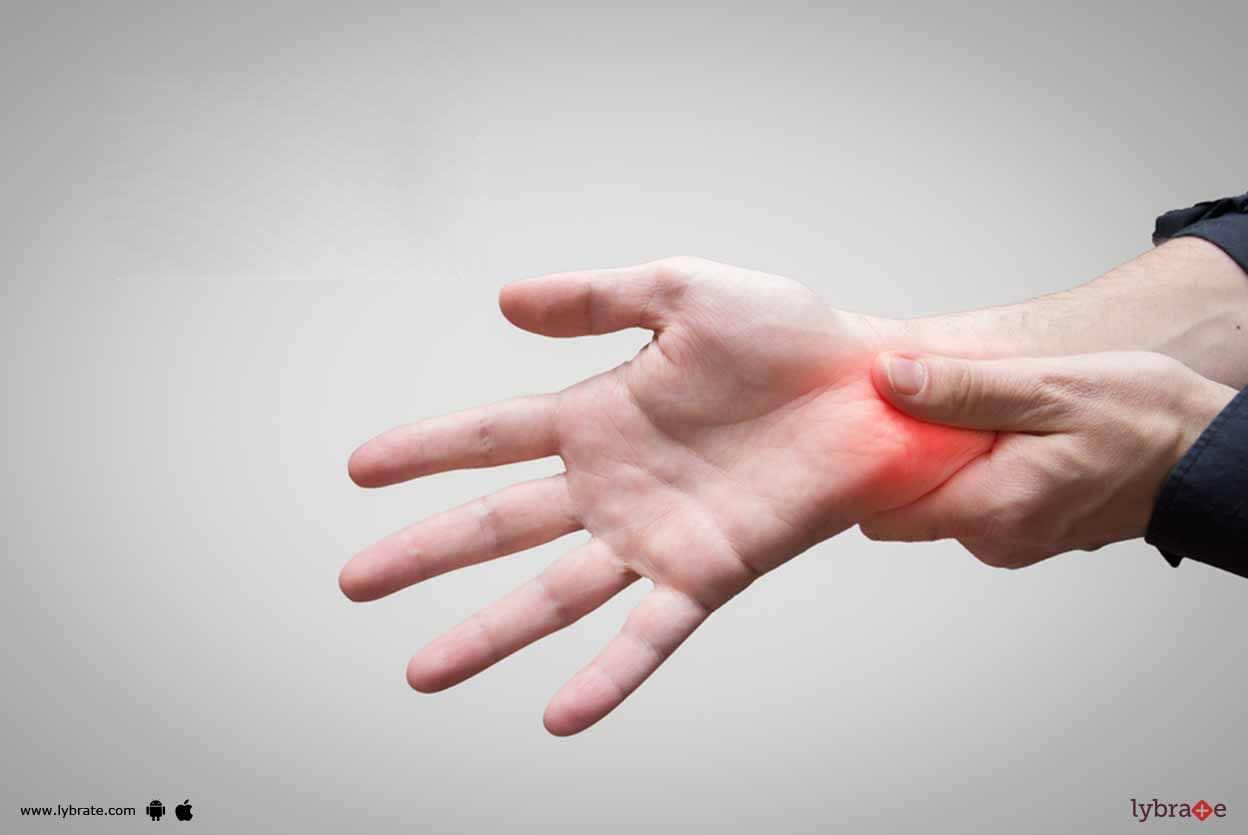Get the App
For Doctors
Login/Sign-up
About
Health Feed
Find Doctors
Health Packages
AllQ&AsTipsQuizzes
Carpal Tunnel Syndrome Health Feed
Asked for female, 54 years old from Chandigarh
Share
Bookmark
Report
It sounds like you're experiencing limited mobility in your thumbs and are unsure about the underlying cause, whether it's related to carpal tunnel syndrome or basal thumb arthritis. Here's what you can consider in terms of diagnosis and testing:
medical evaluation: schedule an appointment with a healthcare professional, preferably a hand specialist or orthopedic surgeon, who can assess your symptoms and perform a thorough physical examination of your thumbs and hands. They will ask about yo...more
medical evaluation: schedule an appointment with a healthcare professional, preferably a hand specialist or orthopedic surgeon, who can assess your symptoms and perform a thorough physical examination of your thumbs and hands. They will ask about yo...more
37 people found this helpful
Health Query
Share
Bookmark
Report
Compression
wearing compression stockings is vital for preventing and treating varicose veins. They steadily squeeze your legs to help improve your circulation. They may also help to relieve pain, discomfort or swelling in your legs.
Walking
just walk more. It’s a great way to encourage blood circulation in your legs.
Pedaling
lie flat on your back. Place your hands out to your sides. If you prefer you can place them beneath your buttocks to prevent strain to the lower back. ...more
wearing compression stockings is vital for preventing and treating varicose veins. They steadily squeeze your legs to help improve your circulation. They may also help to relieve pain, discomfort or swelling in your legs.
Walking
just walk more. It’s a great way to encourage blood circulation in your legs.
Pedaling
lie flat on your back. Place your hands out to your sides. If you prefer you can place them beneath your buttocks to prevent strain to the lower back. ...more
9 people found this helpful
Asked for male, 25 years old from Bangalore
Share
Bookmark
Report
Hi sir / mam what is the best treatment for ulnar play (cubital tunnel syndrome) instead of surgery.
Cold compresses can help reduce swelling in the area. Cooling also helps to numb sharp pain. Apply an ice pack for up to 20 minutes, up to five times a day. Use a frozen gel pack, ice cubes in a plastic bag, or a bag of frozen peas. Wrap the cold pack in a soft towel. Do not apply a cold pack directly to skin.
Heat therapy
heat helps to relax tense muscles and soothe a stiff area. It can help with muscle pain and bonny pain. Use a heated gel pack, heating pad or a hot water bottle.
Heat therapy
heat helps to relax tense muscles and soothe a stiff area. It can help with muscle pain and bonny pain. Use a heated gel pack, heating pad or a hot water bottle.
10 people found this helpful
Health Query
Share
Bookmark
Report
I am sorry to hear about your concern but will be happy to assist you.
If these conservative measures fail to provide relief after three months, your doctor may consider surgery to reduce pressure on the radial nerve. Surgery is often recommended in severe cases, particularly those in which the wrist becomes weak or droopy or it becomes difficult to extend the fingers.
Let's connect over a call so that we can discuss your concern in details and make a suitable treatment plan for you.
If these conservative measures fail to provide relief after three months, your doctor may consider surgery to reduce pressure on the radial nerve. Surgery is often recommended in severe cases, particularly those in which the wrist becomes weak or droopy or it becomes difficult to extend the fingers.
Let's connect over a call so that we can discuss your concern in details and make a suitable treatment plan for you.
17 people found this helpful
Health Query
Share
Bookmark
Report
Health Query
Share
Bookmark
Report
MD, Fellowship in Intergrative Medicine,...read more
Integrated Medicine Specialist•Kochi
There are multiple causes for your health problem .treat the root cause and not the symptoms or disease. Medical history provided is insufficient detailed history is needed to identify your disease triggers .get educated first before taking any medicines .share your doctors prescription
2) provide all blood and other investigation test results has your current Dr. done all a) 4 inflammatory markers) all 12 vitamins levels. C) all 8 mineral levels, deficiency of vitamins and minerals may be t...more
2) provide all blood and other investigation test results has your current Dr. done all a) 4 inflammatory markers) all 12 vitamins levels. C) all 8 mineral levels, deficiency of vitamins and minerals may be t...more
10 people found this helpful
Health Query
Share
Bookmark
Report
I am suffering from carpel tunnel syndrome. Left hand feel weakness at time of working. Please help.
Carpal tunnel syndrome is a common condition that causes pain, numbness, tingling, and weakness in the hand and wrist. It happens when there is increased pressure within the wrist on a nerve called the median nerve. This nerve provides sensation to the thumb, index, and middle fingers, and to half of the ring finger. Let's have a detailed discussion to ensure proper treatment.
28 people found this helpful
Last Updated: 6 years ago• Featured Tip
Share
Bookmark
Report
Multi Speciality•Chandigarh
The human hand has multiple bones, tendons, ligaments and muscles which in unison help us to grip things and manipulate other objects to do our work. Within the wrist lies a narrow passageway on the palm side which houses the main nerve for movement of the nine tendons. These tendons help us to move our fingers individually and grip things or accomplish any task we want with our hands.
What is carpal tunnel syndrome?
Carpal tunnel syndrome is a condition where this nerve gets ...more
What is carpal tunnel syndrome?
Carpal tunnel syndrome is a condition where this nerve gets ...more
Asked for male, 22 years old from Bhramapur
Share
Bookmark
Report
Yes physiotherapy is useful in carpel tunnel syndrome. Also use pregabalin if vitamin b12 is short or deficient.
Asked for male, 22 years old from Bhramapur
Share
Bookmark
Report
Treat carpal tunnel syndrome as early as possible after symptoms start.
Take more frequent breaks to rest your hands. Avoiding activities that worsen symptoms and applying cold packs to reduce swelling also may help.
Other treatment options include wrist splinting, medications and surgery. Splinting and other conservative treatments are more likely to help if you've had only mild to moderate symptoms for less than 10 months.
Lifestyle and home remedies
these steps may provide tem...more
Take more frequent breaks to rest your hands. Avoiding activities that worsen symptoms and applying cold packs to reduce swelling also may help.
Other treatment options include wrist splinting, medications and surgery. Splinting and other conservative treatments are more likely to help if you've had only mild to moderate symptoms for less than 10 months.
Lifestyle and home remedies
these steps may provide tem...more
Book appointment with top doctors for Carpal Tunnel Syndrome treatment
View fees, clinic timings and reviews
Ask a free question
Get FREE multiple opinions from Doctors
posted anonymously











